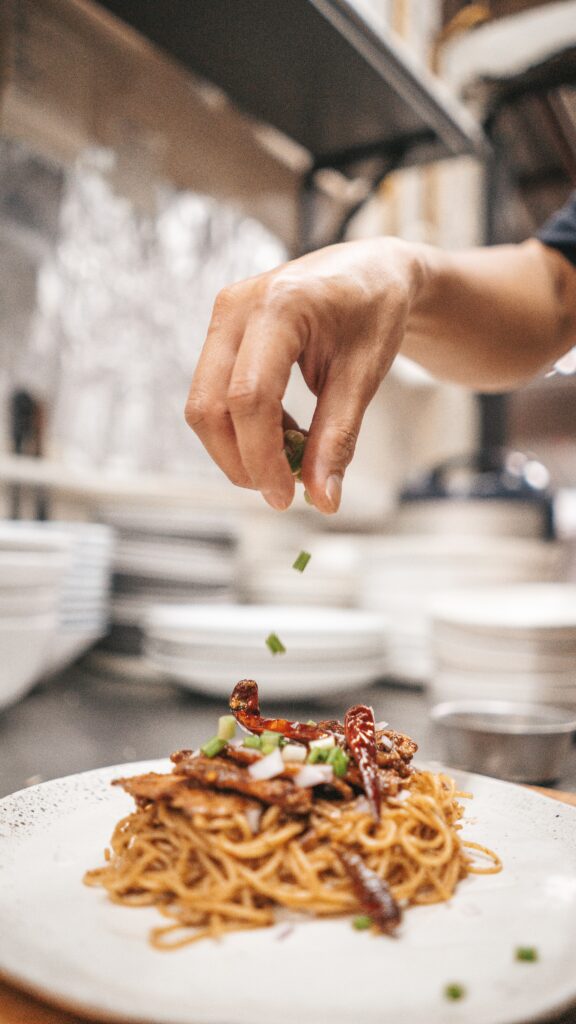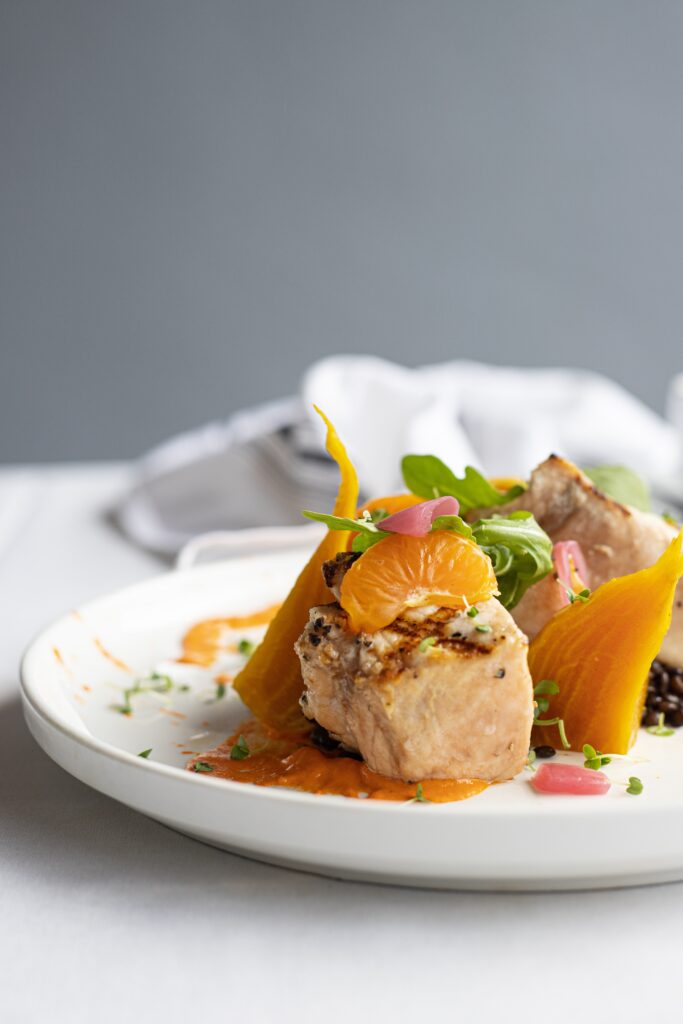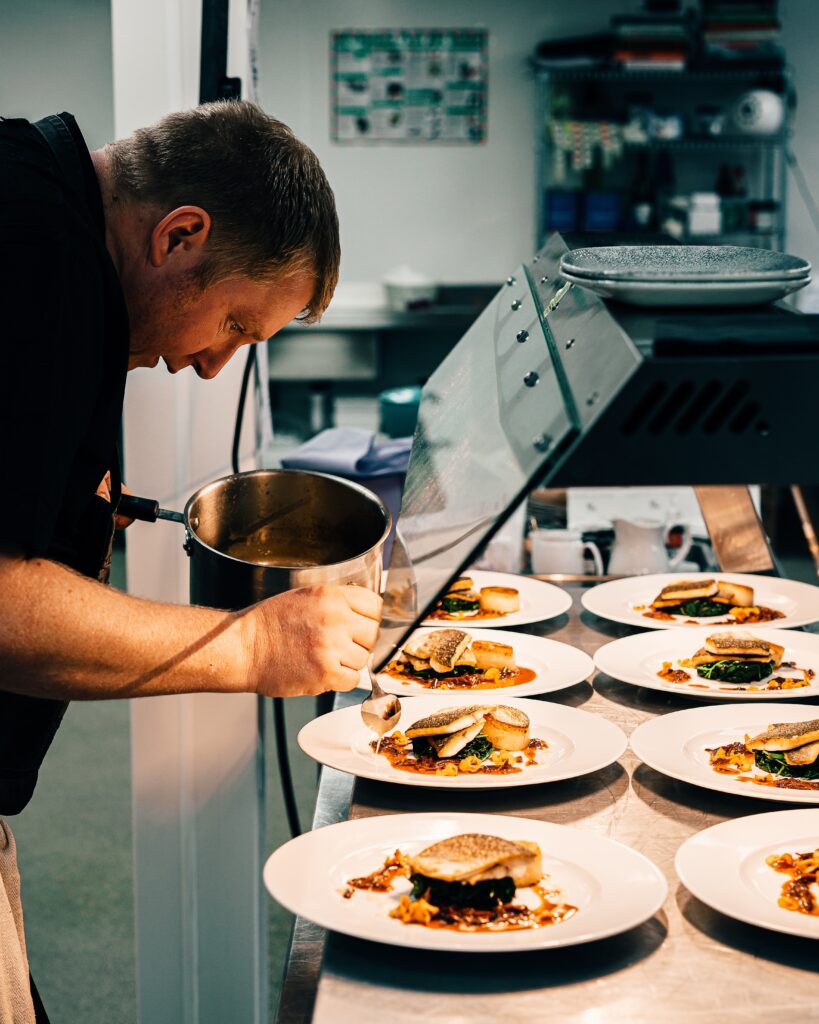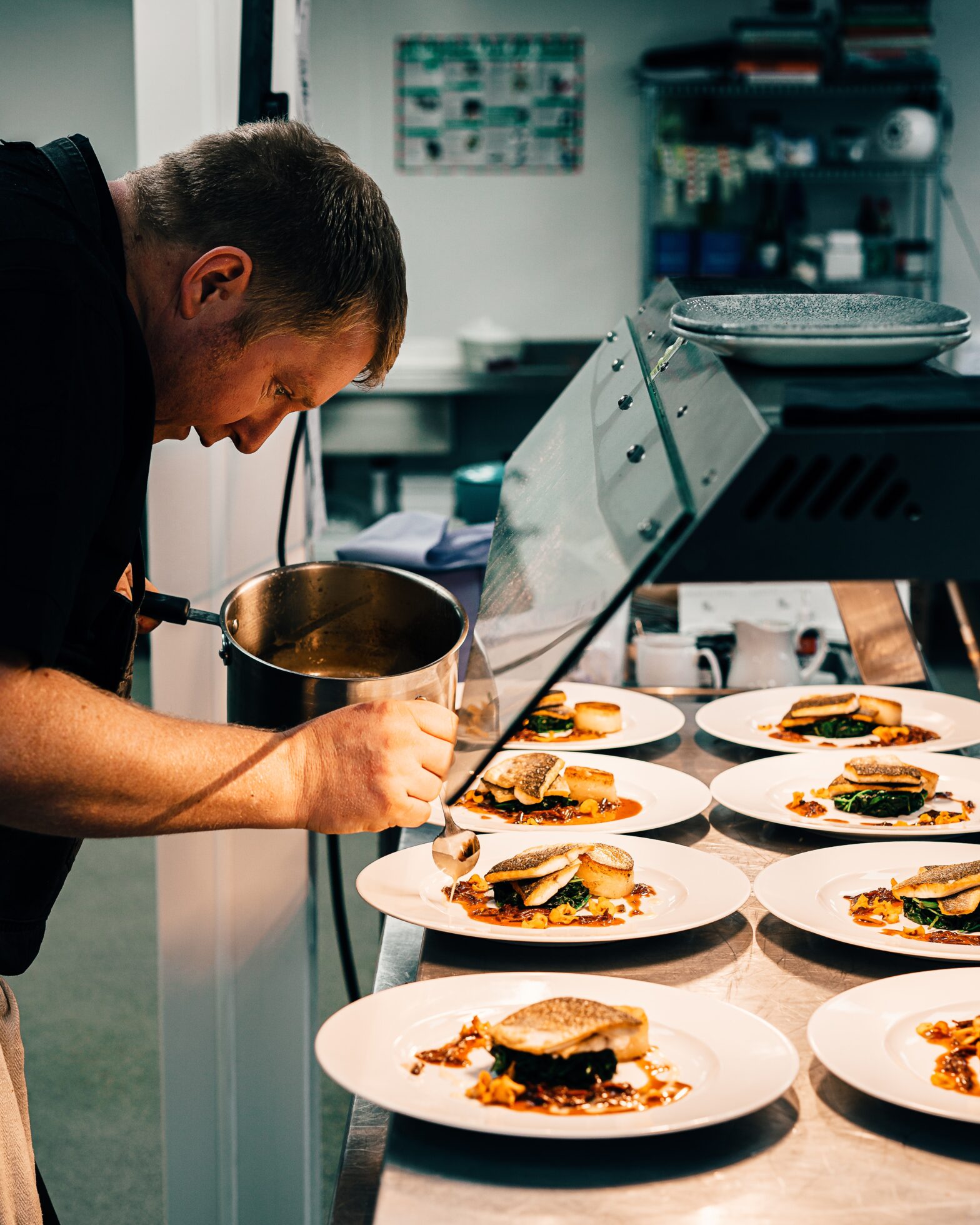The Art and Science of Cooking is a fascinating exploration of the origins, techniques, and ingredients that have shaped the culinary world throughout history. From the primitive discovery of roasting meats to the advanced water supply systems of the Roman Empire, this article delves into the intertwined relationship between cooking as an art form and as a scientific process. Tracing the evolution of culinary practices from the domestication of livestock to the introduction of cast-iron stoves and the cultivation of new foods, this comprehensive overview highlights the diverse cultures and innovations that have contributed to the rich tapestry of global cuisine. Through a captivating blend of historical insights and culinary revelations, readers will gain a newfound appreciation for the art and science of cooking.
The origins of cooking
The origins of cooking are still unclear, but it is believed that primitive humans may have first discovered roasting meats by chance. As early humans learned to control fire, they realized that cooking meat not only made it easier to chew and digest but also enhanced its flavor. This discovery marked the beginning of a culinary journey that would evolve and shape human civilization.
Discovery of roasting meats
Roasting meat was one of the earliest cooking methods discovered by humans. The process involved placing meat over an open flame or hot coals, allowing the heat to cook the meat slowly and evenly. This technique not only made the meat more palatable but also helped to kill any potentially harmful bacteria present in the raw meat. As humans became more skilled in controlling fire, they began to experiment with different cuts of meat and various cooking times, leading to a deeper understanding of temperature control in cooking.
Advances in culinary techniques
Over time, culinary techniques advanced with the introduction of earthenware for cooking and storing food. The ability to create containers that could withstand high heat revolutionized the way food was prepared. It allowed for the creation of new cooking techniques such as boiling, stewing, and braising. Boiling involved submerging food in a liquid and heating it until it reached its boiling point. This method was used to cook grains, vegetables, and meats. Stewing and braising involved cooking food slowly in a liquid, resulting in tender and flavorful dishes.
Cultivation of edible plants
As humans transitioned from a hunter-gatherer lifestyle to settled agricultural communities, the cultivation of edible plants became a significant development. Ancient civilizations learned to grow crops such as lentils, almonds, peas, corn, onions, olives, and tomatoes. These ingredients became essential staple foods, providing sustenance and flavor to their diets. Farmers honed their agricultural practices, improving crop yields and diversifying their harvest. The cultivation of edible plants not only expanded the culinary repertoire but also contributed to the development of different cooking techniques.

Cooking techniques throughout history
Throughout history, cooking techniques have continued to evolve, reflecting the cultural and technological advancements of different societies. These techniques have played a crucial role in transforming raw ingredients into delicious and nutritious meals.
Boiling
Boiling is a cooking technique that involves immersing food in a liquid and heating it until it reaches its boiling point. This method is used to cook grains, vegetables, and meats, allowing them to soften and become more tender. Boiling is a fundamental cooking technique that has been used for centuries, and it continues to be an essential skill in modern culinary practices.
Stewing
Stewing is a slow-cooking method that involves cooking food in a liquid over low heat for an extended period. This technique allows flavors to meld together, resulting in rich and flavorful dishes. Stewing is commonly used for tougher cuts of meat, where the slow cooking process helps to break down the collagen and make the meat tender.
Braising
Braising is a combination cooking method that involves searing food at a high temperature, followed by simmering it in liquid over low heat. This technique is commonly used for larger cuts of meat, such as roasts, to seal in the juices and then cook them slowly in flavorful liquids. Braising results in tender and succulent dishes that are packed with flavor.
Pickling
Pickling is a preservation method that involves immersing food in a solution of vinegar, salt, and spices. This technique extends the shelf life of ingredients, while also imparting tangy and flavorful notes. Pickling is commonly used for vegetables and fruits, creating condiments and side dishes that add a burst of flavor to meals.
Frying
Frying is a cooking technique that involves submerging food in hot oil or fat. This high-heat cooking method creates a crispy and golden exterior while cooking the food quickly. Frying is commonly used for various foods such as meats, vegetables, and even dough. It can be done in shallow or deep oil, depending on the desired result.
Oven baking
Oven baking is a cooking technique that involves cooking food in a closed oven. This method utilizes dry heat to cook ingredients evenly, resulting in well-cooked and flavorful dishes. Oven baking is commonly used for bread, pastries, casseroles, and roasted meats. It allows for precise temperature control, making it a versatile cooking technique.
Diverse use of ingredients
Throughout history, different cultures have utilized a wide range of ingredients in their cooking practices. These ingredients have not only provided sustenance but have also contributed to the unique flavors and culinary traditions of various cultures.
Use of lentils, almonds, peas, corn, onions, olives, bread, tomatoes, coriander
Lentils, almonds, peas, corn, onions, olives, bread, tomatoes, and coriander are just a few examples of ingredients that have been widely used throughout history. Lentils, for instance, are legumes that are rich in protein and have been consumed for thousands of years. Almonds provide a nutty flavor and are often used in both sweet and savory dishes. Peas and corn are versatile vegetables that can be used in soups, salads, and stews. Onions add aroma and depth of flavor to a wide range of dishes, while olives and olive oil are staple ingredients in Mediterranean cuisines. Bread, tomatoes, and coriander are essential elements of various cultures’ culinary traditions, adding texture, color, and taste to meals.

Ancient Chinese culinary practices
Chinese cuisine has a rich culinary heritage that dates back several millennia. It is influenced by a deep understanding of the relationship between food and health, as well as the philosophical principles of balance and harmony.
Cultivation of soybeans
The cultivation of soybeans in China predates recorded history. Soybeans are a versatile legume that can be used in various forms, such as tofu, soy sauce, and soy milk. These soy products have become integral ingredients in Chinese cooking, providing a source of protein and adding depth of flavor to dishes.
Chinese herbal listing
The Chinese had a herbal listing of 365 plants, each corresponding to a specific day of the year. This comprehensive list categorizes plants based on their medicinal properties and culinary uses. Chinese cooking often incorporates herbs and spices, such as ginger, garlic, and star anise, to enhance both the flavor and the health benefits of the food.
Origins of tea brewing
Tea brewing, an integral part of Chinese culture, has ancient origins. Legend has it that tea was discovered accidentally by Emperor Shen Nong, who was boiling water when a tea leaf fell into his pot. Intrigued by the aroma, he tasted the infusion and found it to be delightful. Since then, tea has become an essential beverage in Chinese cuisine, offering not only refreshment but also various health benefits.
Inventions and advancements in cooking
Throughout history, inventors and culinary enthusiasts have made significant contributions to the field of cooking. Their innovations and advancements have shaped the way we prepare and enjoy food.
Possible invention of vending machine
The vending machine, a staple of modern convenience, may have its origins in ancient times. Hero of Alexandria, a Greek engineer and mathematician, was credited with inventing a device that dispensed holy water in ancient Egypt around 200 BC. Although not explicitly used for food, this early vending machine demonstrates the ingenuity and desire for automated convenience that continues to drive culinary innovations today.
Archestratus and the first cookbook
Archestratus, a Greek poet and gourmet, is known for writing the first known cookbook in the 4th century BC. His work, titled “Hedypatheia” or “The Life of Luxury,” focused on the pleasures of dining and provided recipes and advice on selecting and preparing ingredients. This pioneering cookbook laid the foundation for future culinary literature and showcased the significance of documenting culinary knowledge.
Roman Empire’s water supply systems
The Roman Empire, known for its remarkable engineering feats, also made significant advancements in cooking practices. They developed sophisticated water supply systems, including aqueducts and complex piping networks, to provide clean water for cooking, cleaning, and sanitation purposes. These innovations not only improved the quality of life but also played a crucial role in culinary practices, allowing for more efficient and hygienic food preparation.

Changes in cooking techniques and equipment
As societies progressed and new technologies emerged, cooking techniques and equipment underwent significant changes. These changes have revolutionized the way food is prepared and have expanded the possibilities in the culinary world.
Introduction of cast-iron stoves
The 15th century witnessed the introduction of cast-iron stoves in Europe. These stoves allowed for more efficient and controlled cooking, as they distributed heat more evenly than open fires or hearths. Cast-iron stoves provided a stable and reliable source of heat, allowing for precise temperature control and making it easier to regulate cooking times. This advancement revolutionized the way food was cooked, leading to new and exciting culinary possibilities.
Cultivation of new foods
The cultivation of new foods has also had a significant impact on cooking techniques and practices. In the 15th century, Europe saw the introduction of new ingredients such as haricot beans, chilies, aubergines, and allspice. These new food items became integrated into local cuisines, inspiring chefs and home cooks to experiment with different flavors and cooking methods. The cultivation of new foods continues to this day, bringing fresh and exciting ingredients to the kitchen and pushing culinary boundaries.
Cooking as an art
Cooking is not merely a means to an end but also an art form that allows individuals to express their creativity and passion. Through flavor combinations, food presentation, and aesthetics, cooking can evoke emotions and create unique sensory experiences.
Flavor combinations and creativity
One of the hallmarks of cooking as an art is the exploration of flavor combinations. Chefs and home cooks alike experiment with different ingredients, spices, and seasonings to create dishes that tantalize the taste buds and stimulate the senses. The ability to balance flavors, incorporate contrasting elements, and create harmonious combinations is a testament to the creativity and artistry of cooking.
Food presentation and aesthetics
Food presentation plays a crucial role in the appreciation of culinary creations. Chefs carefully consider the visual appeal of their dishes, using techniques such as plating, garnishing, and the use of vibrant colors to create visually striking presentations. The art of food presentation not only enhances the overall dining experience but also allows chefs to showcase their culinary skills and express their artistic vision.
Cooking as a science
While cooking is undoubtedly an art, it is also deeply rooted in scientific principles. Understanding the chemical reactions that occur during cooking, comprehending the role of heat and temperature, and applying proper cooking techniques all contribute to the scientific aspect of culinary practices.
Chemical reactions in cooking
Cooking involves a series of chemical reactions that transform raw ingredients into flavorful and nutritious dishes. Processes such as caramelization, maillard reaction, fermentation, and emulsification all play a role in creating complex flavors, textures, and aromas. By understanding these chemical reactions, chefs and home cooks can manipulate ingredients and cooking methods to achieve desired results.
Understanding heat and temperature
Heat and temperature are fundamental aspects of cooking. Different cooking techniques require precise control of heat and temperature to ensure that food is cooked evenly and thoroughly. Understanding the relationship between heat and various cooking methods allows cooks to apply the appropriate techniques and achieve optimal results. From searing to slow cooking, each technique relies on the careful manipulation of heat to attain the desired outcome.
Cooking techniques and food safety
Science also plays a critical role in ensuring food safety. Proper cooking techniques, such as reaching and maintaining a specific temperature, are essential for killing harmful bacteria and pathogens that may be present in raw ingredients. Understanding food safety guidelines helps to prevent foodborne illnesses and promotes healthy cooking practices.
The role of measurements and proportions
Cooking is not just about creativity and intuition; it also relies on precise measurements and proportions. Accurate measurements of ingredients ensure consistency in flavor and texture, allowing cooks to reproduce successful dishes time and time again.
Importance of accurate measurements
Accurate measurements are essential for following recipes, especially when it comes to baking and other precise cooking techniques. The correct balance of ingredients is crucial for achieving the desired taste, texture, and overall quality of the dish. Measuring ingredients such as flour, sugar, oil, and spices ensures that the desired proportions are maintained, resulting in a successful outcome.
Balance of ingredients and flavors
Cooking is all about achieving a balance of flavors. The careful consideration of ingredient proportions allows cooks to create dishes that are well-rounded, harmonious, and satisfying. Balancing sweet and savory, acidic and creamy, spicy and mild flavors adds depth and complexity to a dish, creating a memorable dining experience.
The impact of cultural influences
Cultures around the world have their unique cooking styles, ingredients, and culinary traditions. The influence of these diverse cultures has shaped and enriched the global culinary landscape, leading to the incorporation of foreign ingredients, the development of distinct regional cooking styles, and the preservation of traditional cooking techniques.
Regional cooking styles
Different regions have distinct cooking styles that are influenced by factors such as climate, geography, available ingredients, and cultural practices. Whether it is the delicate flavors of Japanese cuisine, the bold and spicy dishes of Indian cuisine, or the hearty comfort foods of European cuisine, regional cooking styles reflect the culinary history and preferences of the local populace.
Incorporation of foreign ingredients
The exploration and discovery of new lands throughout history have led to the exchange of ingredients and culinary techniques between cultures. The incorporation of foreign ingredients has expanded culinary possibilities and enriched local cuisines. Examples include the introduction of chili peppers from the Americas into European and Asian cuisines, the adoption of spices from the East in European cooking, and the fusion of different culinary traditions in countries with diverse cultural influences.
Traditions and customs in cooking
Cooking is often deeply intertwined with traditions and customs. Cultural celebrations, religious practices, and social gatherings are often centered around food. Traditional cooking techniques and recipes are passed down through generations, preserving cultural identity and connecting individuals to their heritage. The preservation of these traditions and customs ensures the continuation of diverse culinary practices worldwide.
In conclusion, cooking is both an art and a science that has evolved throughout history. From the discovery of roasting meats to the invention of new cooking techniques and equipment, cooking has played a vital role in human civilization. Cultural influences, the use of diverse ingredients, and advances in culinary practices have shaped the way we prepare and enjoy food. Whether cooking is seen as an expression of creativity or an application of scientific principles, it remains a fundamental aspect of human existence, bringing together individuals, cultures, and traditions. Through the centuries, cooking has continued to evolve, leaving a lasting impact on our taste buds, our health, and our shared human experience.
